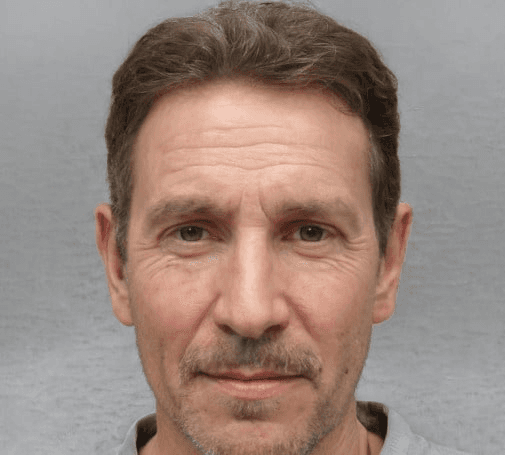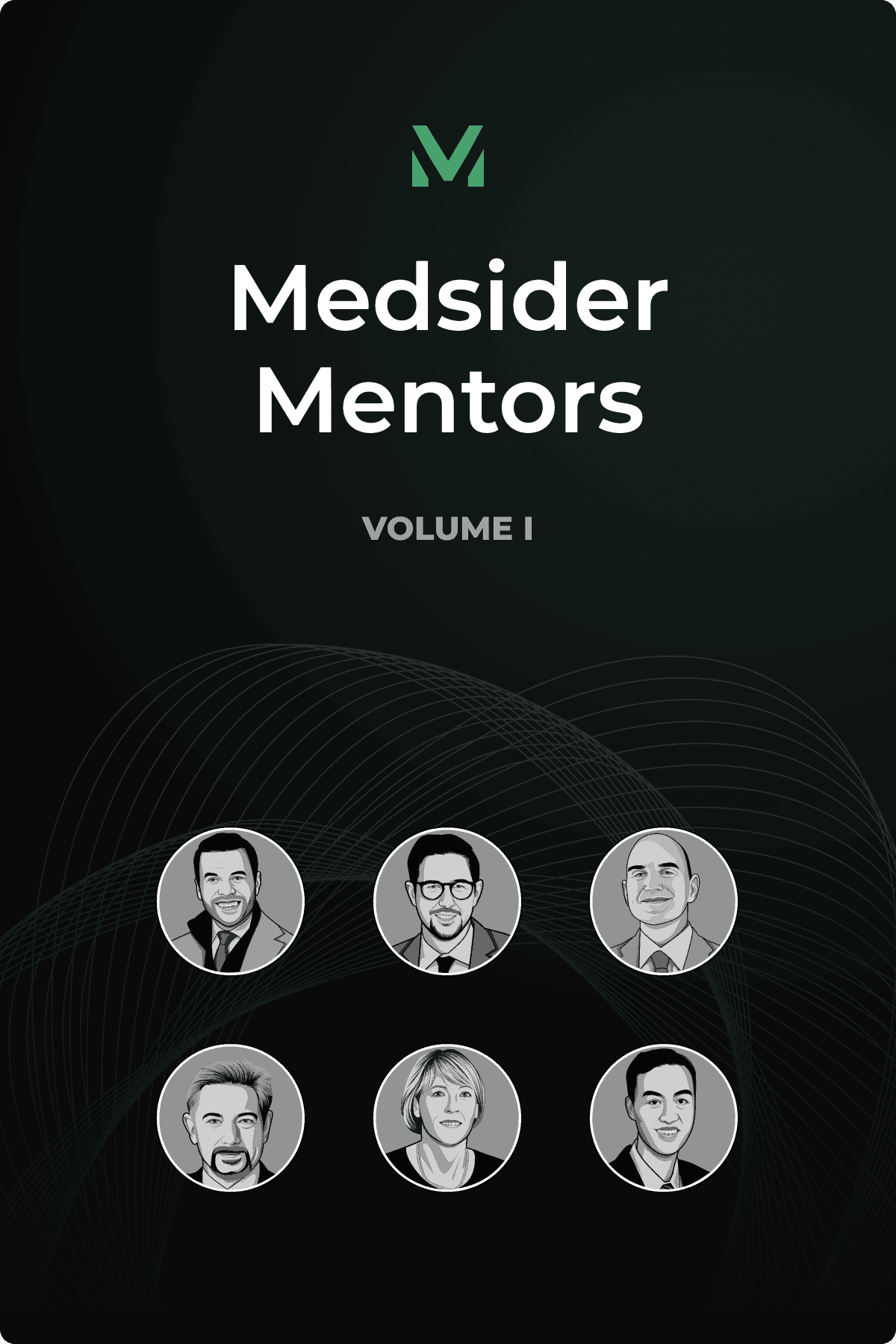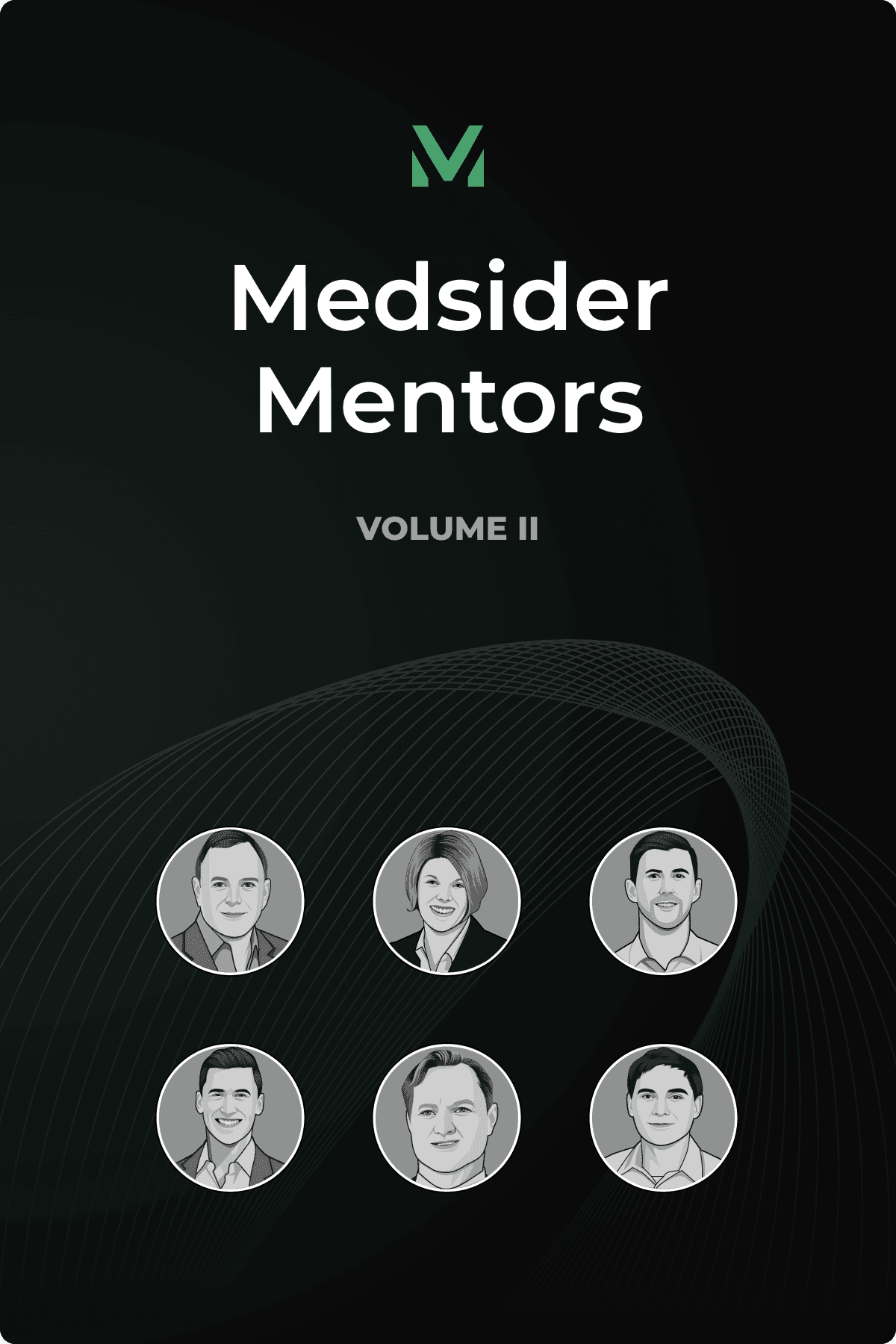How to Succeed Without Venture Capital
Interview with Front Line Medical Co-Founders Drs. Asha Parekh and Adam Power

Key Learnings From Asha & Adam's Experience
Being a startup CEO takes balancing speed, adaptability, and informed decision-making. To maintain momentum, aim to act decisively with 40-70% of the information rather than waiting for complete certainty. Clinical feedback early on is vital. If you lack it, bring in the right expertise through co-founders, partnerships, or advisors. Above all, keep listening to feedback, even after commercialization. This can uncover applications for your tech that you never imagined.
When choosing your clinical/regulatory roadmap, start where you can leverage local resources, which is typically where you live. But if you aim to be a global company, it’s important to understand the trade-offs between pursuing regulatory pathways in different regions. Even if you meet the regulatory bare minimum, keep investing in clinical data that demonstrates market value.
VC funding can be alluring, but it often undermines your control over the company’s direction. Be strategic when choosing investors—physicians can be excellent candidates as they bring considerable credibility to your venture. The most important factors are having a compelling story that clearly outlines how your solution solves a clear need and consistently executing against your milestones.
Drs. Asha Parekh and Adam Power co-founded Front Line Medical Technologies in 2017. We hosted Asha back in 2021. At the time, Front Line’s team was refining their flagship product, COBRA-OS. Today, the company is commercial in Canada and Europe, with other regions underway.
COBRA-OS stands for control of bleeding, resuscitation, and arterial occlusion system. It’s the world’s smallest life-saving aortic occlusion device that offers a fast, minimally invasive way to control bleeding and sustain critical organ perfusion until definitive care is available. It’s designed to tackle a life-threatening issue in trauma care: non-compressible torso hemorrhage (NCTH). NCTH causes the patient to rapidly lose blood into the chest or abdomen, and is the leading cause of preventable death in trauma patients before they reach the hospital. Beyond trauma, COBRA-OS has proven invaluable in military battlefield settings, postpartum hemorrhage, and pre-hospital emergencies.
Adam is a practicing vascular surgeon with a background in medical device innovation and firsthand experience in trauma care. Asha, a PhD in Biomedical Engineering, brings technical expertise to the team. They came together during a fellowship program for engineers and clinicians, and ultimately founded Front Line in 2017. They fully committed to the venture within a year and have spent the last six years fine-tuning their technology and working through the challenges of bringing it to market.
Today, Front Line is entering a growth phase. After successfully launching COBRA-OS in North America, the company has expanded into European markets and is preparing further international announcements regarding its trial on nonischemic cardiac arrest. “We’re scaling up, growing internationally, and exploring new applications to help as many patients as possible,” Adam shares.
Co-founders of Front Line Medical
Dr. Asha Parekh, co-founder and CEO of Front Line Medical Technologies, is a biomedical engineer focused on advancing trauma care through innovative medical devices. With a PhD in Biomedical Engineering from Western University, Asha combines technical expertise with entrepreneurial leadership. Dr. Adam Power, co-founder and Chief Medical Officer of Front Line, is an academic and practicing vascular surgeon at Western University, with extensive training from institutions including Dalhousie, McMaster, and Mayo Clinic.
Sponsor Message
We recently released the seventh volume of Medsider Mentors, which summarizes key learnings from the most popular Medsider interviews over the last six months.
We get it—keeping up with every Medsider interview isn’t easy. That’s why we created Medsider Mentors. These e-book volumes distill the best practices and insider secrets from top founders and CEOs, all in a downloadable, easy-to-digest format.
Check out the latest volume here. Premium members get free access to all past and future volumes, plus a treasure trove of other resources.
If you’re not a premium member yet, you should definitely consider signing up. We recently revamped Medsider with swanky new features, especially for our premium members. In addition to every volume of Medsider Mentors, you’ll get full access to our entire interview library, dating back to 2010.
You’ll also get Medsider Playbooks—curated guides packed with actionable insights on topics like fundraising, regulatory challenges, reimbursement strategies, and more.
And if you’re fundraising, don’t miss our exclusive investor database, featuring over 750 life science VCs, family offices, and angels. We’ve even created 3 custom packages to help you with your next fundraise.
Learn more by visiting Medsider Mentors.
Seek Clinical-Engineering Synergy for Optimal Acceleration
Making decisions with limited information is a reality in medtech. Asha stresses, “Early on, clinical feedback is so important,” and she credits their internal clinical expert, Adam, for the company’s ability to move fast without losing business focus.
"You can’t wait for 100% certainty,” explains Asha. It slows you down. But at the same time, you need enough data to make an informed decision. The point is, if you get caught up in every detail, you’ll never move forward. “If you have somewhere between 40 to 70% confidence, make a move,” Asha says. This mindset draws heavily from surgeons, who frequently make critical decisions in uncertain, high-stakes scenarios. Asha says she’s more of a 70% decision-maker, while Adam leans toward 40%. This balance works for them because they’re aligned on where they want to take the company.
To scale a company successfully, you need this trust and alignment between co-founders. Asha emphasizes, “What is more important than your founding relationship? To be aligned even from those early conversations about that is so, so important.” If you sense disagreement during the early days, it’s a red flag. It’s better to address those issues—or even walk away—than to struggle later. That’s why it’s vital to have those conversations upfront and ensure everyone’s on the same page.
Front Line’s clinician-engineer co-founding team has been a major factor in their success. The duo was able to iterate rapidly, and what made that possible was their ability to get feedback on the spot. For example, if a manufacturing partner couldn’t meet a specific technical specification, Adam would ask, “What can you achieve?” Often, the adjusted spec was clinically sufficient. Thanks to their complementary expertise, they didn’t have to wait weeks for feedback from external clinicians.
For founders without this setup, where in-house expertise isn’t an option, Asha suggests finding ways to get clinicians involved early. “If you don’t have a clinician co-founder, bring them in as close as possible—whether through partnerships, advisory roles, or even as investors.”
That said, it’s also important to keep operations simple and lean. Fewer partners mean fewer delays. The Front Line team was able to manage as many functions in-house as they could, saving time and cutting costs. To achieve this, you need to be involved across all aspects of the business, just as they were—from quality and regulatory to clinical studies. “We didn’t pretend to be experts in everything, but we made sure we understood enough to make informed decisions and move quickly,” Adam explains. Their motto is, “Don’t trust anyone; do your own homework.”
Your homework also includes listening to feedback. It should be a part of your identity as a CEO, even after the development phase is over. The market itself can reveal unexpected applications for a technology once it’s in use. Front Line’s aortic occlusion device was initially developed for trauma cases, particularly non-compressible bleeding in civilian hospitals. As its use expanded, it proved effective in military settings and, more recently, in managing postpartum hemorrhage. The device's features made it a natural fit for this application, and its adoption spread organically. While Front Line was expanding into Europe, another application came into view: pre-hospital care. Unlike in North America, Europe has a robust system of pre-hospital physicians who started using the device for situations like cardiac arrest, not just for bleeding. This opened up a whole new avenue for its use.
While they didn’t need to pivot, Asha underlines that exploring new applications strengthened Front Line’s position and could provide an essential fallback strategy if market conditions shift for any reason. Reminiscing on how listening to feedback enabled them to find new applications, Asha notes, “When you innovate, especially way back before it hits the market, you only have an idea of what your technology might be able to treat. You often don't realize the different avenues that your technology might be able to take. The eyes do not see what the mind does not know.”
Global Expansion Without Compromise
Front Line first started to commercialize in Canada, with the ambition of going global. “This is where we started, and we want to be global, period,” Asha says.
“We chose to start in Canada, not just because we’re proud Canadians, but also because of the resources available. As an academic vascular surgeon working at the hospital, I was able to conduct our first clinical study very inexpensively—essentially, I worked for free,” Adam explains.
Regulatory pathways differ significantly between regions, and understanding these differences is crucial for prioritizing markets. Starting with a CE mark was more popular in the past. But these days, it’s becoming more favorable to begin in the U.S. For example, COBRA-OS is a Class II medical device through the FDA while it’s recognized as a Class III medical device in Europe.
Regulatory approvals in different regions can get you into other markets, too. “FDA approval opens many doors, but CE Mark is still preferred in certain countries,” says Adam. Asha adds, “Health Canada, FDA, and CE Mark are the big three. If you have one of these, it can help you catapult into other markets, though there’s always additional work to do.”
Yet, meeting regulatory requirements isn’t always enough to gain market traction, which is why Front Line has proactively gathered clinical data. “We didn’t need human data for the North American market,” explains Asha, “but we collected it anyway to demonstrate efficacy and support adoption.” This dataset paid off when MDR requirements shifted, and clinical data became necessary for European approval. Asha reflects, “It’s always worth considering what evidence the market wants to see, not just what regulators require. That foresight can make all the difference.”
Canada has become an increasingly popular option for early-stage clinical studies due to its smoother Investigational Testing Authorization (ITA) process. “ITA is much simpler than an IDE in the U.S.,” says Adam, “If you get Research Ethics Board approval at your institution and meet the criteria, the process is very straightforward. It’s faster, cheaper, and helps you get data to move forward.” Canada’s clinical infrastructure also offers cost-effective options, with busy academic institutions often able to recruit patients quickly. “Finding quicker, less expensive pathways to collect data can make a big difference,” Asha says.
Lastly, Adam and Asha touch on their pricing strategy in the global market, an aspect that many medtech startups wrestle with, especially for cutting-edge technologies. Adam notes, “The market will often tell you what it needs. Stay open to feedback, and don’t lock yourself into a rigid plan.” Asha and Adam knew they could price higher, thanks to their superior technology. But making a profit out of fewer uses doesn’t help patients. “At the end of all this, we won’t be proud of our bank balance. We’ll be proud of the patients it helps,” says Adam. That’s why they decided to keep COBRA-OS’s price lower and aim for deeper reach in the global market.

Choose Your Investors Wisely
Fundraising is not just about money. Ideally, investors are more than financial backers—they become your long-term partners in your journey.
While it’s not always possible to handpick investors, Adam recommends doing your homework to assess whether they share your vision. “We’ve been incredibly lucky with our investors, but I’ve seen how a bad investor can sink a company,” he shares. One way to do this is through authenticity. Asha says, “When you pitch well and tell a powerful story, it’s easier to garner interest. Investors want to believe in both the mission and the people driving it.” In their case, Front Line’s life-saving stories were helpful in opening doors.
Venture capital can provide significant funding, yet it often comes with trade-offs that can limit flexibility. “It’s hard to say no when VCs dangle money in front of you,” Asha admits. But if the terms don’t align with yours, it’s not a good idea. Asha and Adam note that they consciously avoided early VC funding. Instead, they relied on private investors and angels to retain control over their direction. “By focusing on execution and reaching commercial milestones, we’re now in a stronger position to negotiate with institutional investors if we decide to go that route,” Adam shares. It’s good to note that nothing builds investor confidence like delivering on your promises.
Another strategy is to bring in end-users—such as physicians—as investors. This not only helps raise capital but also boosts credibility with other investors, especially those unfamiliar with medtech. Front Line has surgeons from Adam’s network invested in the company, and this was helpful in bridging the gap for those less familiar with the medtech field. Asha says, “When they saw other clinicians investing, it held a lot of weight and built confidence.”
There’s no one-size-fits-all approach to fundraising, and Asha and Adam acknowledge that their path may not work for everyone. Adam concludes, “Don’t rush into anything. Weigh all your options carefully, and choose the path that aligns with your long-term goals.”
Sponsor Message
After raising over $40M from corporate venture and cardiovascular key opinion leaders, FastWave Medical has progressed rapidly in the development of its next-generation intravascular lithotripsy (IVL) systems for complex calcific disease.
The market size for IVL is over $9 billion and the only player in the space was recently acquired for over $13 billion. So naturally, there’s a lot of investor interest in FastWave.
Given the continued demand to invest in FastWave, their team has opened up an investor waitlist for anyone interested in potentially owning a piece of the company.
The last time the company opened up an private placement, it closed nearly $20 million in less than a month. So if you’re interested in investing in one of the hottest cardiovascular startups, opt into their investor waitlist here.
You May Like These Articles
Medsider Premium
Become a premium member and unlock access to exclusive Medsider benefits.



